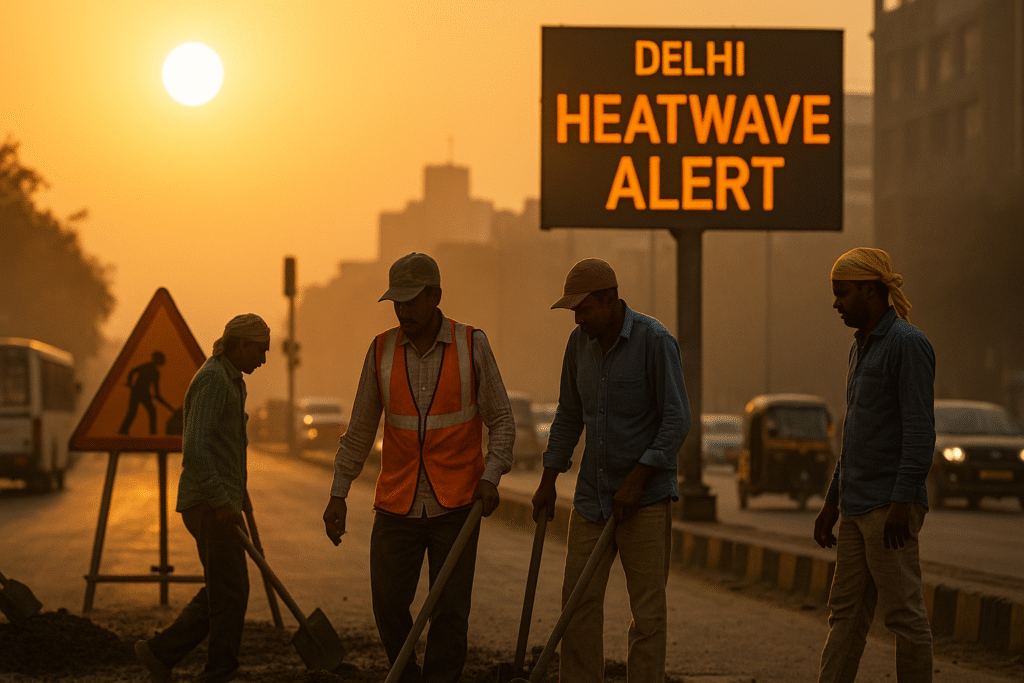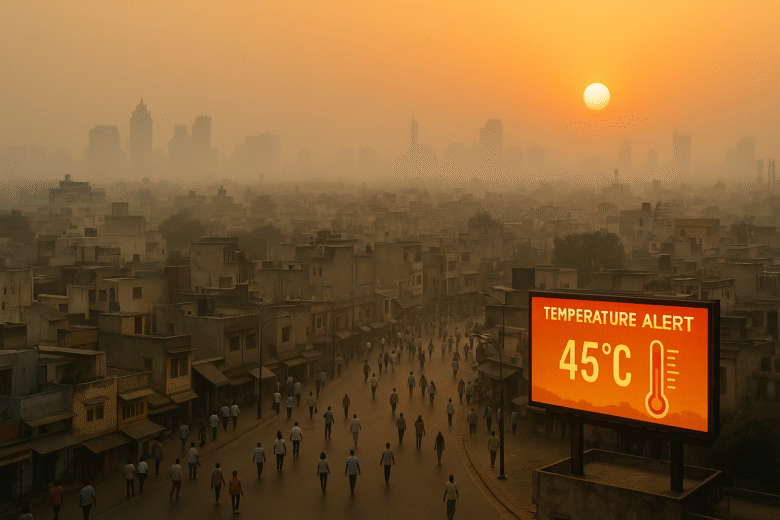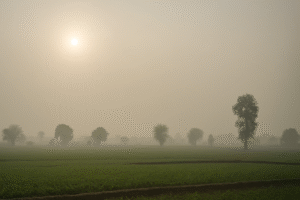In April 2025, some parts of the India-Pakistan region experienced temperatures up to 49 °C (120 °F) — not in the peak of summer, but in an early-season surge. That’s the backdrop of “Heatwave 2025: When South Asia Crossed the Temperature Tipping Point.” What we’re witnessing isn’t just another hot season — it’s a sign that extreme heat is becoming normal, and that matters for every one of us.
This Time It Came Early — and Strong
Typically, summer heat peaks in May–June across northern India and Pakistan. But the 2025 event arrived in mid-April, catching many off guard. Regions such as Balochistan in Pakistan saw readings near 49 °C. In north-western India, old records were smashed, alert systems strained, and vulnerable populations — farm workers, street vendors, the elderly — were suddenly exposed to conditions that may no longer be “rare.”
Why This Feels Like a Tipping Point
Heatwaves are not new. What’s new is their timing, frequency, intensity, and the fact that many systems — healthcare, agriculture, and infrastructure — are being overloaded. Recent studies show heatwave patterns shifting in South Asia: more early-season events, longer durations, and stronger synchronisation between regions.
In plain English: when farmers expect “just another hot month,” they instead get something shockingly worse. When urban power grids expect a surge in May but get it in April, the warning bells go off too late.
Impacts on People, Plants, and Infrastructure
Health systems under stress: Hospitals reported higher cases of heat-related illnesses, dehydration, and heat-stroke — especially where cooling options are limited. In city slums or rural villages, where air-conditioning is rare and shade is scarce, the hazard is real.
Agriculture shaken: Crops are calibrated to seasonal heating. When the mercury spikes unusually early or runs hotter than expected, the growth cycles are disrupted. Yields may drop, and quality might suffer — farmers feel it first.
Workers pushed to the limit: Field labourers, road-repair crews, and outdoor vendors face direct exposure. One worker in Rajasthan recalled: “We cannot even stand to work… When I am out, I feel that people would burn due to the heat outside.”
Infrastructure creaks: Power demand surges for cooling, then fails; water systems come under pressure; transport networks falter. A heatwave isn’t just hot air — it stretches systems to breaking.
A “new normal” for many: South Asia’s vulnerability is high due to dense population, intense urbanisation, and limited adaptation capacity. A spring heatwave this strong would once have seemed extreme — now it’s edging toward expectation.

A City That Woke Up
In Delhi, a school official noted that weather alerts arrived, but many homes and classrooms lacked effective cooling. On one April afternoon, temperatures climbed beyond 40 °C, much higher than typical seasonal values. Students stayed inside, assemblies were cancelled, and parents worried. The sense was clear: “We’re supposed to be preparing for May-June heat — not April.”
This ground-level story mirrors what scientists are saying: the season of discomfort has begun before its time.
What Lies Behind the Escalation
Why is this happening now? Science points to a confluence of factors:
- Human-driven climate change raising baseline temperatures, making hot spells hotter and more frequent.
- Land-surface changes (less soil moisture, more concrete, urban heat-islands) that intensify heat.
- Atmospheric patterns that allow high-pressure systems to linger, trap heat, and cut off normal relief.
In short: these aren’t just freak events; they are symptoms of a shifting climate system.
Why This Matters to You
Even if you live in a cooler part of India, or in a city with more shade and water access, this matters — for several reasons:
Public health: Heat hits the young, old, and sick hardest. Your friends, neighbours, or family could be at risk.
Food and prices: Heat-stressed crops mean lower yields, which eventually affect food supply and grocery bills.
Work and wages: Outdoor labour becomes riskier, slower, and costlier. A hot day is an economic day lost.
Power and comfort: When demand surges, blackouts or voltage drops follow. Your comfort is threatened.
Climate justice: This is not just an environmental issue — it’s a social one. Those least responsible often suffer most.
Are We Still Waiting for “Normal”?
Heatwaves used to be anomalies. We treated them like “once-in-a-decade” events. Not anymore. If a heatwave arrives in April, early in the season, we should treat it with urgency — not dismiss it as “unusual.”
If we keep thinking, “Oh, it’ll be normal by June,” that mindset risks forgetting that normal may have changed. And if our infrastructure, our public health systems, our agriculture, and our urban planning are still calibrated to old norms, then we are behind the curve. We are reacting, not preparing.
Conclusion
Heatwave 2025: When South Asia Crossed the Temperature Tipping Point isn’t a warning we can defer — it’s a wake-up. The early arrival, intensity, and breadth of the heatwave show that extreme heat isn’t waiting for the calendar to say “mid-summer.” It’s here, now.
We must shift from saying “hope we’ll manage” to asking “how will we adapt?” That means better early-warning systems, shade-and-cooling design, work-hours reform for outdoor labour, infrastructure upgrades — and above all, recognising that a “hot day” is no longer a nuisance, it might be a signal.
So the call to action: check your local heat-action plan, ask your city what cooling-steps are in place, support farmers whose crops are under heat stress, and protect vulnerable family members this summer. Because when South Asia crosses that tipping point, everyone feels the heat.
Author’s Note
I remember an interview with a road-worker who said, “Heat is just part of the job.” Today I think he meant that he accepted it — but what he didn’t know was that the job and the heat were changing together. This blog is my nudge: let’s not just accept the heat. Let’s understand it, talk about it, act on it.
G.C., Ecosociosphere contributor.
References and Further Reading
- India and Pakistan Already Sweltering in “New Normal” Heatwave Conditions
- Extended Heatwave in India, Pakistan to Test Survivability Limits
- Recent Changes in Spatio-Temporal Patterns of Heatwaves over South Asia
- Increasing Risk of Oppressive Heatwaves over India in the Future Warming
- Climate Change Made India and Pakistan Heatwaves “30 Times More Likely”
- 2025 India–Pakistan Heat Wave




